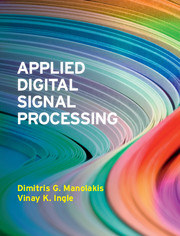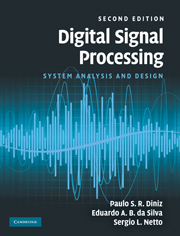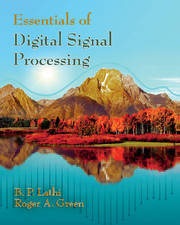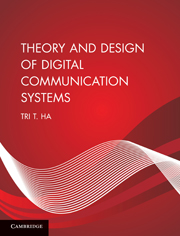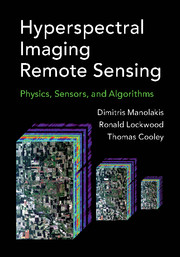Applied Digital Signal Processing
Master the basic concepts and methodologies of digital signal processing with this systematic introduction, without the need for an extensive mathematical background. The authors lead the reader through the fundamental mathematical principles underlying the operation of key signal processing techniques, providing simple arguments and cases rather than detailed general proofs. Coverage of practical implementation, discussion of the limitations of particular methods and plentiful MATLAB illustrations allow readers to better connect theory and practice. A focus on algorithms that are of theoretical importance or useful in real-world applications ensures that students cover material relevant to engineering practice, and equips students and practitioners alike with the basic principles necessary to apply DSP techniques to a variety of applications. Chapters include worked examples, problems and computer experiments, helping students to absorb the material they have just read. Lecture slides for all figures and solutions to the numerous problems are available to instructors.
- Blends theory, practical implementation of algorithms with MATLAB and practical examples to equip the reader with an understanding of the basic concepts and methodologies of DSP
- The how-to-use approach outlines the principles necessary to apply DSP techniques to a wide variety of applications, ensuring students cover material relevant to engineering practice
- Systematic and concise approach gives the detail needed, with enough rigor to appeal to a theory-oriented reader, without overwhelming, detailed exposition
Reviews & endorsements
'The primary advantage of this book is the integrated inclusion of MATLAB throughout … in some textbooks the MATLAB components appear to have been added as an afterthought.' Richard M. Dansereau, Carleton University, Ontario
'… a good balance between the depth and clarity of discussion of important topics in DSP and the requirement of mathematical adequacy for the students. This textbook matches with the background of my students.' Yuanwei Jin, University of Hartford, Connecticut
'The innovative figures help students visualise complicated concepts.' Thad B. Welch, Boise State University
'A main strength of this book is its inclusion of MATLAB throughout. There are other books that do this, but I think that MATLAB is more integrated in this book than in the competing books. It provides an appropriate amount of information when it is needed, without overwhelming the reader with excessive detail.' Matthew Valenti, West Virginia University
Product details
November 2011Adobe eBook Reader
9781139118972
0 pages
0kg
400 colour illus.
This ISBN is for an eBook version which is distributed on our behalf by a third party.
Table of Contents
- 1. Introduction
- 2. Discrete-time signals and systems
- 3. The z-transform
- 4. Fourier representation of signals
- 5. Transform analysis of LTI systems
- 6. Sampling of continuous-time signals
- 7. The discrete Fourier transform
- 8. Computation of the discrete Fourier transform
- 9. Structures for discrete-time systems
- 10. Design of FIR filters
- 11. Design of IIR filters
- 12. Multirate signal processing
- 13. Random signals
- 14. Random signal processing
- 15. Finite wordlength effects.

